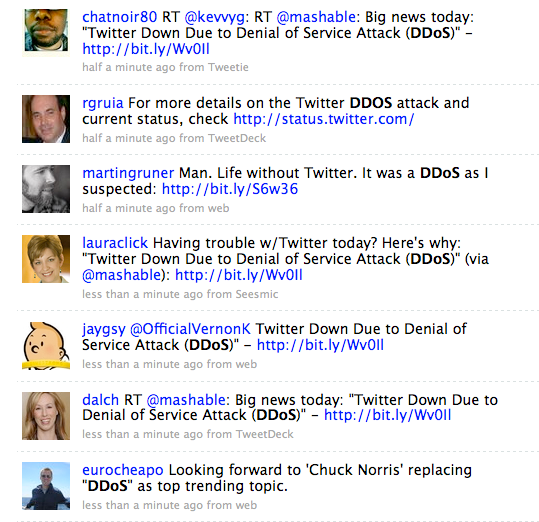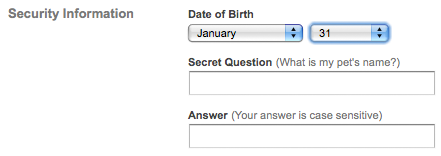 Tr.im, one of umpteen URL-shortening services used by Twitterfans and other people who needed to compress long URLs into as little space as possible, is now the first major player among those umpteen servers to call it quits–it’s being shuttered by parent company Nambu. The company says it couldn’t figure out how to make money with Tr.im, and couldn’t find anyone interested in taking it over–and that Bit.ly‘s stance as the default URL-shortener used by Twitter itself means that Tr.im would fail in the long run no matter what.
Tr.im, one of umpteen URL-shortening services used by Twitterfans and other people who needed to compress long URLs into as little space as possible, is now the first major player among those umpteen servers to call it quits–it’s being shuttered by parent company Nambu. The company says it couldn’t figure out how to make money with Tr.im, and couldn’t find anyone interested in taking it over–and that Bit.ly‘s stance as the default URL-shortener used by Twitter itself means that Tr.im would fail in the long run no matter what.
Tr.im was a worthy contender, but there are plenty of other perfectly good competitors out there, so its closure wouldn’t be a huge issue for new URLs that need to be shortened by Tr.im users. What’s worrisome is the status of existing Tr.immed URLs–of which there are scads all over the Web, and which people are continuing to create right now even though the service is closing. If Nambu shuts down the servers that forward the short URLs to the original long ones, the Tr.immed versions won’t work. The company doesn’t say what its long-term plans are for existing URLs, but it does A) guarantee that they’ll still work through the end of 2009; and B) say that running the servers is prohibitively expensive. I assume that’s a hint, at least, that Tr.immed URLs will likely stop working sometime next year. (Unless someone else steps in to save the service–which doesn’t seem unthinkable given the attention the shutdown is getting.)
If Tr.im does go away completely, it’s a wake-up call we all knew would come eventually, if we gave the matter any thought. Non-shortened URLs will work forever–as long as the page they’re in and the page they link to exists, they’re good. Shortened ones live and die at the discretion of the company that shortened them for you, assuming it doesn’t go out of business. And nearly everybody in the URL-shortening game is a very small company without a proven plan for economic sustainability.
All the information contained in millions of tweets with shortened URLs is tremendously valuable–but many of them simply don’t make sense if you can’t click through to the URL that’s been shortened. Sooner or later, Tr.im’s vanishing act is going to remove all the context from vast numbers of tweets, and the folks who suffer won’t be the people who shortened the URLs, but the ones who want to read those tweets.
I don’t have an inkling what Twitter’s long-term URL-shortening strategy is–hey, are there any clues in those stolen documents?–but I hope it intends to start squeezing down its own URLs. For one thing, I have more faith in Twitter being around for the long haul than I do in the viability of existing URL-shortening services. Also, if Twitter goes out of business, than all those tweets containing shortened URLs may disappear anyhow…

 Like 5Words?
Like 5Words?  When Twitter is having reliability problems, the site is usually able to at least summon up a cheery
When Twitter is having reliability problems, the site is usually able to at least summon up a cheery 
 Back in May, the first edition of TWTRCON–the conference on Twitter for business which I’m proud to have come up with–was held in San Francisco.
Back in May, the first edition of TWTRCON–the conference on Twitter for business which I’m proud to have come up with–was held in San Francisco.  Contrary to current received wisdom, Twitter doesn’t change everything. At least it appears not to have changed the
Contrary to current received wisdom, Twitter doesn’t change everything. At least it appears not to have changed the  Over at Zatz Not Funny, blogger (and frequent Technologizer commenter) Dave Zatz has
Over at Zatz Not Funny, blogger (and frequent Technologizer commenter) Dave Zatz has  Given Facebook’s immense popularity, it comes as no surprise that it is the
Given Facebook’s immense popularity, it comes as no surprise that it is the  How did French data thief “Hacker Croll”
How did French data thief “Hacker Croll”  at Gmail, AT&T, MobileMe, and elsewhere.
at Gmail, AT&T, MobileMe, and elsewhere.